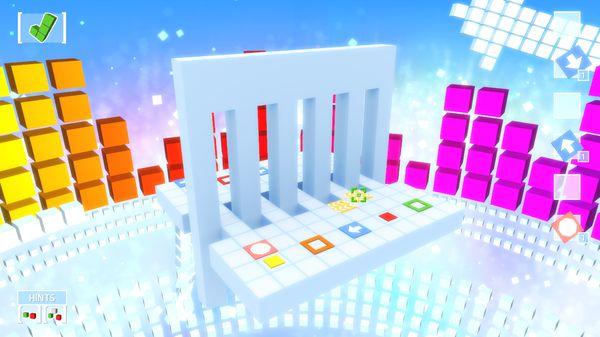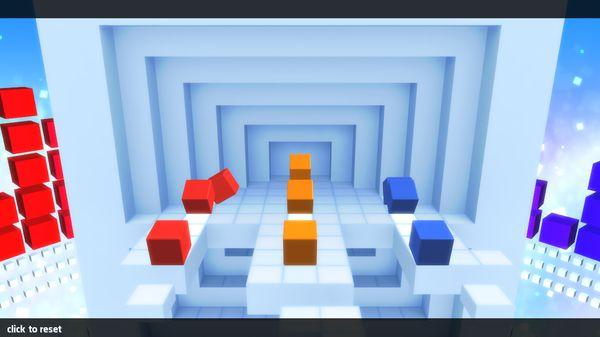- Wondering how to get Monopoly GO! free rolls? Well, you’ve come to the right place. In this guide, we provide you with a bunch of tips and tricks to get some free rolls for the hit new mobile game. We’ll …
Best Roblox Horror Games to Play Right Now – Updated Weekly
By Adele Wilson
Our Best Roblox Horror Games guide features the scariest and most creative experiences to play right now on the platform!The BEST Roblox Games of The Week – Games You Need To Play!
By Sho Roberts
Our feature shares our pick for the Best Roblox Games of the week! With our feature, we guarantee you'll find something new to play!All Grades in Type Soul – Each Race Explained
By Adele Wilson
Our All Grades in Type Soul guide lists every grade in the game for all races, including how to increase your grade quickly!
Rush Review
I love a good puzzle game. There’s something about searching for the solution that’s right in front of your face, if only you could see it. There’s a great feeling of satisfaction when you solve it, only to be presented with a new puzzle with a slightly harder answer. It’s one of the most rewarding genres to play in all of gaming. Rush is a new PC game that looks to join the ranks of addictive and rewarding puzzle games, but do all the pieces fit?

Rush is simple puzzle game wrapped in a gorgeous 3D package
I love a good puzzle game. There’s something about searching for the solution that’s right in front of your face, if only you could see it. There’s a great feeling of satisfaction when you solve it, only to be presented with a new puzzle with a slightly harder answer. It’s one of the most rewarding genres to play in all of gaming. Rush is a new PC game that looks to join the ranks of addictive and rewarding puzzle games, but do all the pieces fit?
Rush is a puzzle game, pure and simple. But wrapped around that puzzle game is a gorgeous 3D playfield and highly stylized graphics that hide it’s base simplicity. It’s a series of one shot puzzles (70 in total) where you need to guide colored blocks from point A to point B without falling over the edge or crashing into each other. You’ll have starting squares where your blocks will start and where they need to go. You’ll place predetermined arrows on the ground to path out how to get the blocks home safely. After dropping your arrows you click go and watch if it works out.

It’s a casual, determined game since there’s no rush to solve the puzzle at a moment’s notice. There’s no time limit or blocks falling from the sky to ratchet up the tension. You take your time, place your arrows and when you’re ready unleash the blocks to see how it all worked out. This aspect reminded me of a game I recently played on the iPhone called Trainyard where you guide trains home be drawing track and hit go to see if you were successful. There’s no editing or moving stuff around on the fly either, you just hit play and see. If you fail you go back to the drawing board and move around whatever you want to try and fix it, then hit play again.
What I found most interesting about Rush was the combination of different puzzle game elements at play here. In addition to things seen in games like Trainyard are the similarities to ChuChu Rocket, the crazy Sega game where you guide rats away from cats by placing arrows on the ground. That game was frantic in all the ways that Rush isn’t which makes it alot more accessible to people.
Sadly however there’s a flaw in the game logic that could spoil the fun. Because you are given a pre-determined set of arrows to use for each level, you need to discern the exact solution the developers want you to. There’s no thinking outside the box or creative solutions here, just the one way to solve the puzzle. What makes games like ChuChu Rocket and Trainyard inspired is the ability to solve the puzzles many ways, rewarding thinking your way through a puzzle. It’s a little deflating trying to guess at what the game wants you to do all the time.

It’s a sad reality in an otherwise fun game, though it’s not like the experience is ruined by the one solution issue. It’s just not as open ended as a lot of puzzle games are these days and it’s definitely worth mentioning for when you make a decision about purchasing the game. I really enjoyed my time with Rush and found myself getting the great sense of accomplishment with each success, I just wish I could think a little more critically to do it.

The good

The bad
More articles...
Monopoly GO! Free Rolls – Links For Free Dice
By Glen Fox
Wondering how to get Monopoly GO! free rolls? Well, you’ve come to the right place. In this guide, we provide you with a bunch of tips and tricks to get some free rolls for the hit new mobile game. We’ll …Best Roblox Horror Games to Play Right Now – Updated Weekly
By Adele Wilson
Our Best Roblox Horror Games guide features the scariest and most creative experiences to play right now on the platform!The BEST Roblox Games of The Week – Games You Need To Play!
By Sho Roberts
Our feature shares our pick for the Best Roblox Games of the week! With our feature, we guarantee you'll find something new to play!All Grades in Type Soul – Each Race Explained
By Adele Wilson
Our All Grades in Type Soul guide lists every grade in the game for all races, including how to increase your grade quickly!







